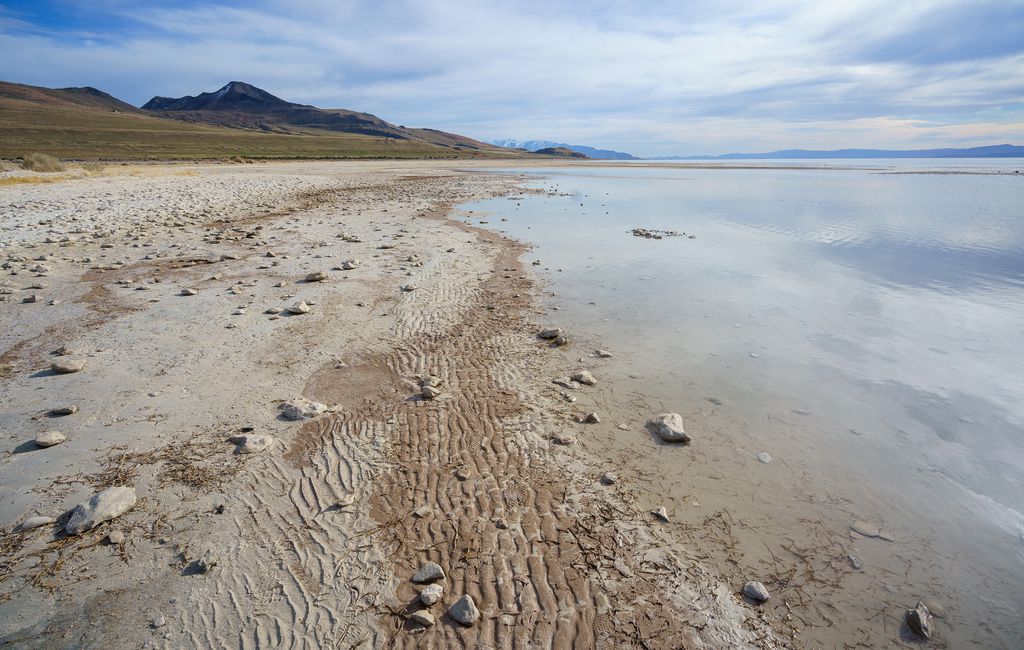State and local leaders are floating all kinds of water restrictions.
Parts of Utah saw wet weather in recent days, but it wasn’t enough to dampen the state’s crippling drought.
Water managers are bracing for another year of shortages, with the lack of moisture expected to impact wildlife populations and drop the Great Salt Lake to a record low for a second year in a row.
TheU.S. Drought Monitor shows nearly all of the state in severe or extreme drought. Last month, Gov. Spencer Cox placed the state underan emergency due to low snowpack and unprecedented dry conditions.
“Our lands are tinder dry,” Brian Steed, executive director of the Department of Natural Resources, said in a news release Thursday.
Steed added that May and June will likely be hotter and drier than normal, with all signs pointing to “a challenging wildfire season.”
All of Salt Lake County is in severe drought or worse, with the eastern edge of the county that includes the Wasatch Mountains in extreme drought. The County Council is considering a plan to transform 132 county-owned park strips and parking lot islands from turf to water-wise plants to save 5 million gallons of water a year.
Salt Lake City Mayor Erin Mendenhall and the Department of Public Utilities announced April 12 that Utah’s capital would start the irrigating season under Stage 2 of its five-stage Water Shortage Contingency Plan. Customers are encouraged to reduce their watering by 5%.
Snowpack in the Jordan and Provo river basins currently sits at 59% of normal, according to the latest Utah Water Supply Outlook report from the Natural Resources Conservation Service, although precipitation for the water year to date is close to normal at 95%.
Utah’s river basins will need several years of above-average conditions for reservoirs to fill, however. Water storage across the state sits at 58% of capacity, down 10% from this time last year, the NRCS reports. Statewide snow-water equivalent, or the amount of water that will melt out of the snowpack, was at 66% of normal as of May 1.
“April precipitation was kind to northern Utah,” the report notes, “but did not deliver for the southern portion of the state.”
The Bear and Weber river basins saw close to normal rain and snowfall last month, but several basins in the southern part of the state had less than 50% of normal conditions.
Even with April’s storms, the Weber Basin Water Conservancy District hasn’t managed to add much storage to its reservoirs and will reduce the amount of water delivered to customers this season. The district plans to buy 14,000 acre-feet from Deer Creek and another 5,000 acre-feet of Echo water shares on the Provo River to shore up supplies, according to a news release from the Division of Water Resources.
Water also has not managed to reach the Great Salt Lake. Last July, the lake’s elevation dipped to 4,191.3 feet above sea level, falling below a previous record low set in 1963. The lake ultimately sank to 4,190.2 feet in October, which is its current lowest point in recorded history. The lake sits at 4,191.1 feet right now, and water managers expect it to drop an additional 2 feet over the summer, setting a new record.
In Ogden, Mayor Mike Caldwell signed a declaration of severe water shortage Wednesday with several outdoor watering guidelines that are in effect until Nov. 1. Under the declaration, residents should wait to water turf until it shows visible signs of stress and irrigate only twice a week.
The mayor further encouraged residents to reduce their water consumption by 10% this season, while commercial water customers should develop plans to reduce watering by 15%.
Impacts from the drought are also taking a toll on wildlife. There are about 100,000 fewer deer across Utah than the target population of 400,000, according to the Division of Wildlife Resources. As such, the Utah Wildlife Board voted late last month to issue fewer general season deer hunting permits.
“We’ve had several years of drought and are still facing ongoing extreme drought conditions statewide, which has a significant impact on the survival rates of deer,” state big game coordinator Covy Jones said in a news release.
Jones added that, like water across the state, demand for deer hunting is outpacing supply.








